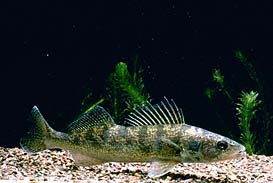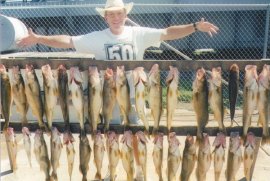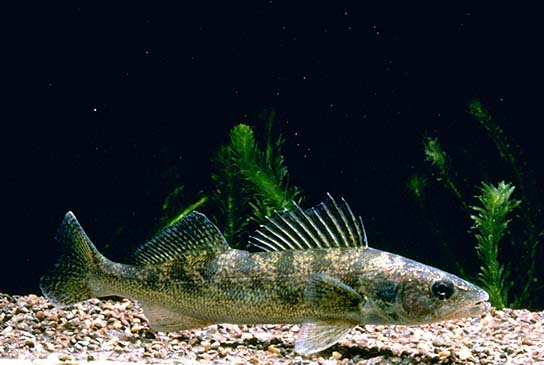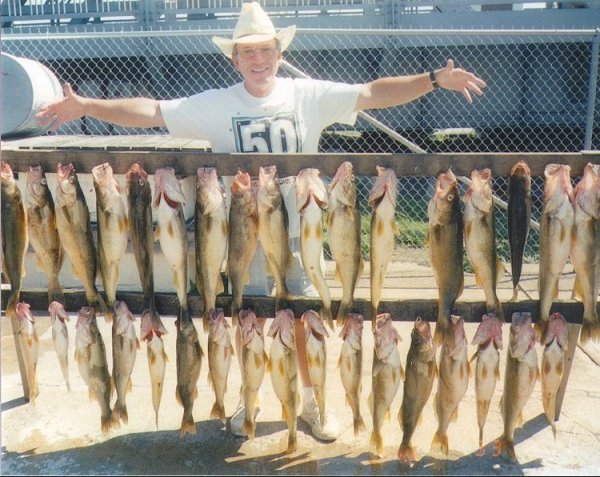Flatfishes, sunfishes, and perchlike fishes
Description
To 3'5" (1 m); 25 lbs (11.3 kg). Elongate, slightly compressed; olive-brown to brassy greenish-yellow above with dusky to black mottlings, belly whitish with yellow-green tinge. Mouth extends to eye, has canine teeth; preopercle serrate. Dorsal fins separate; first dorsal fin dusky with black edge, black blotch on membranes of last 2-3 spines; caudal fin forked, tip of lower lobe white. Lateral line complete, 82-92 scales.
Discussion
The Walleye is the largest North American species in the perch family and one of the most sought sport and food fishes. The largest catch was taken in Old Hickory Lake, Tennessee, in 1960. The Walleye feeds on aquatic insects, crustaceans, amphibians, and almost any available species of fish.




